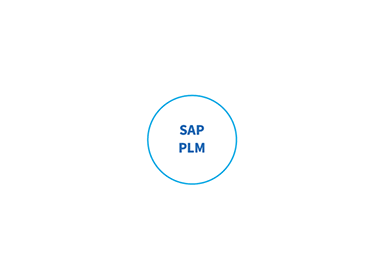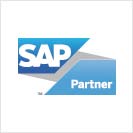SAP PLM Integration

Turn Innovation Management into a Real Competitive Advantage
If you want to stay ahead of the game with your product innovations and the further development of your products, you cannot get around using systematically structured processes to drive your innovation management.
Company-wide integrated processes and continuous information flows enable businesses to react promptly and flexibly to new demands from the market. Thanks to the existing integration of SAP PLM in SAP ERP, this also includes production and material management. The subtle side effect: increased efficiency reduces the overall costs of any innovation, since work that does not add value is largely eliminated from the product development process (PDP).
One way to achieve this goal is to bring all product-descriptive data together in a common Product Lifecycle Management (PLM) system, where it can be managed transparently. Smart processes integrate relevant information into each employee's respective task context.
Our SAP PLM integration solutions at a glance
- ECAD Electric
- ECAD Electronic
- ECAD EDM
- MCAD Mechanic
- SysML / Simulation
- ALM/Software
- Others
This is SAP ECTR: Single Source of Truth for Interdisciplinary Product Development
The SAP Engineering Control Center facilitates the system-based control of the mechatronic PEP. ECTR manages all product data in one consistent and centralised system. ECTR links the related, compatible versions of mechanics, electronics, electrical engineering, software and firmware in a common, integrated data model for the entire product.
The result is a comprehensive and transparent product description, including a common parts list. This can be designed in a variety of ways, for example as
- a complete parts list, reserving a position number range for each domain
- a complete parts list made up of the individual parts lists for MCAD, ECAD and software
- a consolidated structural parts list with all positions
The partially-automated continuous data exchange between engineering teams ensures harmony between product development and its change processes. Neutral formats such as IDF, STEP, PDF, etc. are well suited for this. The viewing tool integrated in SAP PLM makes it easier to collaborate, e.g. for a collision check or the Digital Mock Up (DMU).
Last but not least, having a single source of truth is also a help to the documentation team, who can access all the information they need immediately after the product is released.
The Advantages for Each Development Discipline at a Glance
Each development team specifies their individual, optimal PLM data model as well as the desired system-technical process support. One way this is implemented is through templates designed to standardise the respective development. The teams use these to define their methods, naming conventions, storage locations, which information is generated for whom in which format and based on which native data, and much more. This uniform approach within a domain facilitates cooperation up to and including controlled collaboration.
Integrated at an early stage, production will start promptly as planned
It enables production to be involved very early on in the development process, so that it can begin promptly after approval. This eliminates the often time-consuming and costly back-and-forth of testing and communication between production and design, as well as any rework in engineering.
Production is integrated into development by having the individual domains generate production data at an early stage, together with an initial Engineering Bill of Materials (EBOM) based on their parts lists. Both are transferred to SAP ERP. Here, the preliminary EBOM is converted into a Manufacturing Bill of Materials (MBOM), which the production department can refer to for an initial overview of upcoming tasks. Once the EBOM and MBOM are connected, the MBOM is updated automatically.
Company-wide data transparency
Another way of boosting efficiency is through the maintenance of the central component database in PLM. Regardless of whether existing components are changed or new ones are created and whether this is done in the CAD tool or in PLM, consistent material master data is generated via periodic synchronisation of the component libraries between PLM and authoring tools. They constitute a common basis for all developers of a discipline.
Helpful search functions, transparent data management and consistently classified product data and documents make it easier to quickly locate information. This promotes the reuse of already released data. Yet components used in several products are not managed pointlessly; instead, the end products reference this component. The big advantage: if this frequently used component is adapted, all end products are automatically kept up to date.
SAP Partner

The SAP Engineering Control Center interfaces are distributed by SAP price list. As a longtime partner of SAP SE, we support the interface strategy of SAP and develop the SAP Engineering Control Center interfaces for the following ECAD systems:
- Altium Designer*
- Cadence Allegro*
- Cadence OrCAD CIS*
- Mentor Xpedition*
- Mentor PADS Standard/Plus*
- Mentor PADS Professional
- Pulsonix
*SAP Pricelist product

